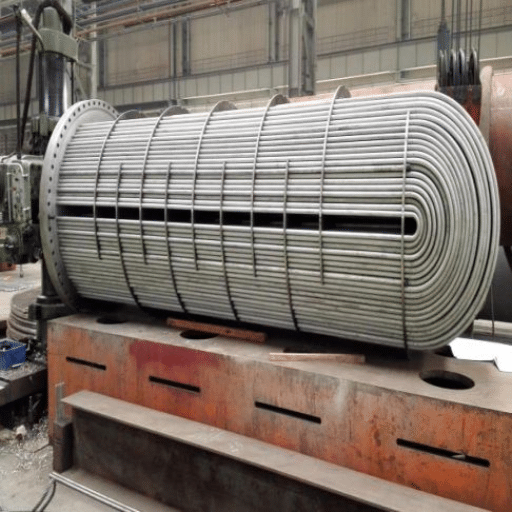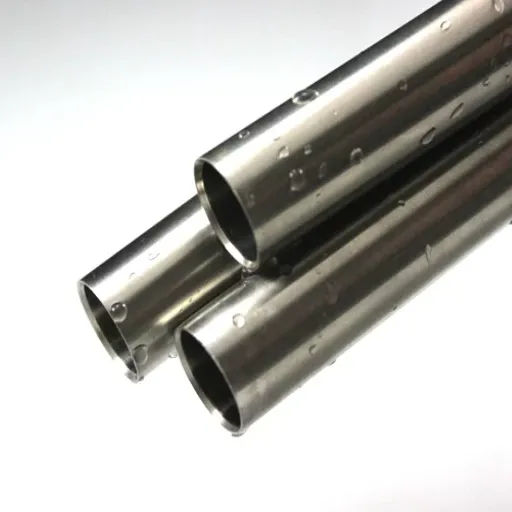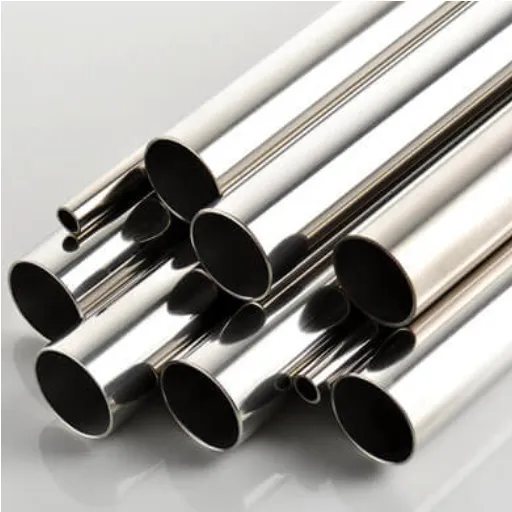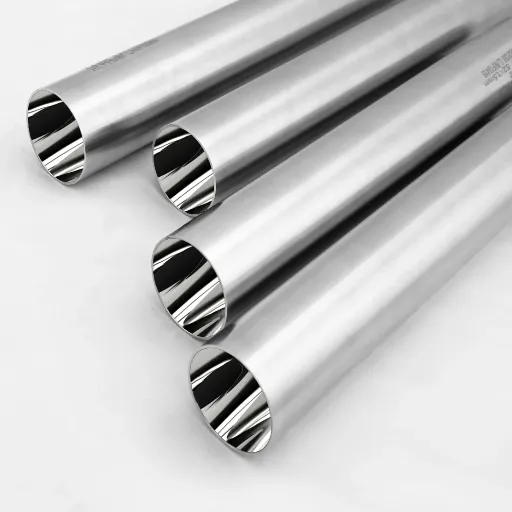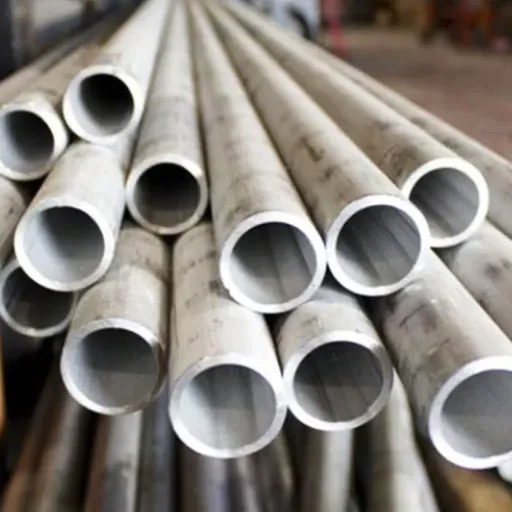Sterling silver and stainless steel are often the main contenders in the battle for the right material to use for jewelry or other daily wear items. Both belong to the category of materials that are very good at different things, and each has its own merits. Are you attracted to the sophisticated and timeless charm of sterling silver? Or perhaps you appreciate the strength and hassle-free features of stainless steel? In this text, we will dissect the main features of the two materials so that you can choose the one that fits your lifestyle, taste, and budget. No matter if you are after a classic piece or something more functional, we will provide you with all the tips and tricks to figure out which one is the best for you.
Introduction to Sterling Silver and Stainless Steel
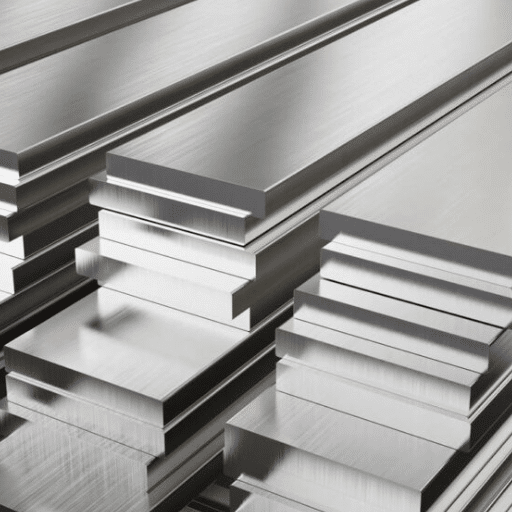
Sterling silver and stainless steel are both widely used materials for making jewelry and accessories, but they have their unique characteristics. Sterling silver is an alloy containing 92.5% silver and 7.5% other metals, usually copper, which makes it look bright and elegant. However, it is soft and gets scratched and tarnished easily with time. On the contrary, stainless steel is an alloy that consists mainly of iron, chromium, and nickel; thus, it has superb durability and is impervious to rust, scratches, and tarnish. While sterling silver is mostly picked for its classic beauty and remarkable history, stainless steel is the winner in the competition for being convenient and non-caring. The final decision between the two is based on your personal values as regards aesthetics, durability, and maintenance.
Definition of Sterling Silver
Sterling silver, known for its quality, is a blend that contains 92.5% of pure silver and 7.5% of other metals, commonly copper. This mixture brings about the silver’s hardness and durability, thus making it more appropriate for the production of jewelry, household items, and artistic pieces. Sterling silver is the perfect substitute of pure silver when softness and susceptibility to damage are considered.
- ✦
Composition: 92.5% pure silver and 7.5% other metals, mostly copper. - ✦
Durability: A more potent and tougher version of pure silver due to the presence of metals. - ✦
Appearance: Shiny and glossy, possessing a never-ending and classy finish. - ✦
Applications: A frequent choice for making jewelry, cutlery, and other ornamental articles. - ✦
Care Requirements: While it undoubtedly tarnishes, it can still be kept and cleaned as beautiful as ever with the right care.
Definition of Stainless Steel
Stainless steel is an alloy made mainly of iron and with different amounts of chromium, nickel, and other elements that do not affect its property of being rust-resistant. Its very high strength, rust resistance, and good looks also contribute to its being a favored material in many industrial fields and related sectors. Key details regarding stainless steel are as follows:
- ✦
Composition: Usually, it contains at least 10.5% chromium and additionally nickel, molybdenum, and other elements depending on the particular grade. - ✦
Corrosion Resistance: The chromium oxide layer is not only very thin and invisible but also provides protection against the rusting and staining of the metal underneath. - ✦
Durability: The material is remarkably tough and resistant to wearing out, and it can survive in high-pressure and high-temperature situations. - ✦
Applications: Its various uses are in the making of kitchen utensils, medical instruments, construction materials, and automotive parts. - ✦
Maintenance: The material can be easily cleaned and has a very low maintenance requirement, which makes it suitable for both hygienic applications and long-term use.
Common Uses in Jewelry
Stainless steel is an attractive material for jewelry mainly because it is cheap, long-lasting, and beautiful. Below are the five most frequent applications of stainless steel in jewelry:
💍 Rings
The ring made of stainless steel is often coated with a layer of gold or platinum. It is not only an attractive piece of jewelry but also an eternally shiny one because of the scratch-proof surface.
📿 Bracelets
Steel that is strong and durable can still be fashionable and used on all occasions. Birthdays, Holidays, Weddings, etc., are all perfect for wearing these classy yet sturdy bracelets.
📿 Necklaces
Stainless steel necklaces are light yet strong with very different styles from a simple chain to a complicated pendant.
👂 Earrings
Hypoallergenic stainless steel earrings are a solution for people with sensitive skin offering nice designs without causing any discomfort.
⌚ Watches
Stainless steel is a material that many watch manufacturers use for the production of watch bands and cases as it provides a modern and elegant look but also excellent durability.
The aforementioned features render stainless steel a material that ranks kind of top but at the same time very low-priced, so that it can be available for making all kinds of jewelry which are not only diverse in forms but also extremely affordable.
Comparative Analysis: Sterling Silver vs Stainless Steel
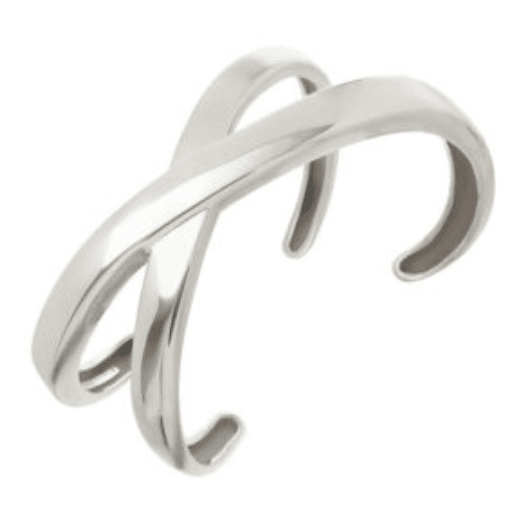
Quick Summary: Sterling silver offers elegance and exclusivity, while stainless steel provides durability, affordability, and low maintenance.
Durability and Longevity
When it comes to the durability and longevity of materials, there are many factors that affect their performance and lifespan. Here are five main points that point out the differences:
🔨 Resistance to Wear and Tear
Material A: Has a scratch and abrasion resistance that can be classified as moderate.
Material B: Will not easily wear out and so will be able to keep its look even when it is old.
💧 Corrosion Resistance
Material A: Will be able to corrode easily in a humid environment if no proper maintenance is done.
Material B: Will be able to withstand corrosion and thus will be perfect for long-term usage.
💪 Impact Resistance
Material A: Will get dents and damage from heavy impact.
Material B: Is very tough and so will resist even very large impact forces.
🌡️ Temperature Tolerance
Material A: May change shape or become unusable at high temperatures.
Material B: Is unaffected and will still work at very high and very low temperatures.
⏰ Lifespan
Material A: Needs to be replaced or repaired frequently after 5-10 years.
Material B: Has a long life of over 20 years with very little maintenance.
After looking at these durability characteristics, one can easily conclude that Material B is the best option for different applications since it is the most durable and last the longest.
Tarnish Resistance
The resistance to tarnish is one of the most important factors to be considered when evaluating materials for long-term use. Below are the details of how different materials are performing in tarnishing-prone environments:
Material A
Tarnished during its lifetime, especially in humid or polluted areas.
Cleaning and maintenance are necessary to help the material maintain its appearance.
Material B
Almost totally resistant to tarnishing agents like sulfur and oxygen.
The material has kept its original shine with very little care for decades.
Material C
Tarnish resistance is moderate, largely depending on the exposure to corrosive elements.
The use of protective coatings may be necessary to assure longevity.
Material D
The material is very resistant to tarnishing and especially under saline conditions.
It can be used in marine and industrial settings that can last an endless cycle without any degradation.
Material E
A little tarnish resistance is shown by the material; however, still, its performance gets worsened if it is continuously exposed to acidic compounds.
Refinishing on a periodic basis might be required to give the material maximum durability.
Analysing these details it clearly comes out that materials such as Material B and Material D are the top best picks where the properties of tarnish resistance are a major concern for application.
Weight and Comfort for Sensitive Skin
When making the decision about the materials in relation to the comfort and weight aspect, particularly for the case of people with sensitive skin, one has to take several factors into account. These are the overall weight of the material, the hypoallergenic properties and the capability of soothing the skin.
Material A
Lightweight and non-irritating, thus suitable for long-term wear.
Hypoallergenic properties allow it to be used by people with very sensitive skin.
Material B
Medium-weight provides a good combination of durability and comfort.
Very friendly to sensitive skin because of its unvarying surface texture.
Material C
Somewhat heavier but well accepted by most skin types.
Probably it needs a lining or a coating to make it comfortable for very sensitive skin.
Material D
Ultra-light and super breathable thus minimum pressure is exerted on the skin.
Very good for hypoallergenic purposes with no cases of irritation reported at all.
Material E
Weighs moderately and having good skin compatibility.
Might not be the ideal choice for people with extremely sensitive skin, as there have been reports of irritation occurring sometimes.
By looking very closely at these properties, one can select the materials that not only provide maximum comfort but at the same time deal with the problem of people having sensitivities.
Pros and Cons of Each Material

Quick Summary: Sterling silver is elegant but high-maintenance, while stainless steel is durable, affordable, and low-maintenance.
Advantages of Sterling Silver
✓ Affordability
One of the main advantages of sterling silver is that it is a more affordable option compared to pure silver, which means a bigger audience can consider it as a choice. Nevertheless, it is still quite inexpensive and very attractive and of good quality.
✓ Versatility
Due to its versatility, sterling silver can easily blend with a variety of styles, from the most casual to the most formal. It is common to use it in making jewelry, tableware, and decorative objects.
✓ Tarnish-Resistant Properties
Sterling silver, while it might need an occasional polish, is usually more tarnish-resistant than pure silver, particularly when maintained properly.
✓ Design Appeal
The capability of sterling silver to produce fine and sophisticated designs makes it even more attractive aesthetically. Its glossy surface and soft feel lend it to be a favorite among designers of eternal pieces.
✓ Eco-Friendliness
The recycling of sterling silver is one hundred percent which also classifies it as a “green” option. Recycling of silver not only minimizes the waste but also supports the earth-friendly habit of sustainable practices.
Disadvantages of Sterling Silver
✗ Tarnishing Over Time
Sterling silver is highly susceptible to tarnishing when it comes into contact with air and moisture. The silver-copper alloy composition is the culprit, as the copper reacts with sulfur and oxygen in the environment, leading to the formation of a tarnish layer that is dark or greyish. Thus, one has to do regular cleaning and polishing activities to keep the metal bright and lustrous.
✗ Softness and Susceptibility to Scratching
Sterling silver, being a metal alloy, possesses the quality of being more durable than pure silver but at the same time it is still soft and tender when compared to metals like gold or platinum. It is this very softness that makes it easy for the metal to get scratched, get dents, or even be deformed, especially where the metal is used frequently.
✗ High Maintenance Requirements
Sterling silver requires regular and often intensive cleaning, polishing, and proper storing in order to maintain its beauty. Lack of proper care can lead to the pieces losing their luster and attractiveness; consequently, more effort will be needed for maintenance.
✗ Reaction to Skin and Environmental Factors
The copper content in sterling silver may cause skin reactions in some people, particularly with prolonged wear. Moreover, skin and environmental factors such as humidity and being too close to perfumes or cleaning agents can speed up the tarnishing process.
✗ Cost Consideration
The price of sterling silver might be comparatively high when juxtaposed with other materials such as stainless steel or alloy jewelry. Although it is a cheaper option than gold and other precious metals, the high price accompanied by the maintenance costs may put off those buyers who are looking for alternatives that are not only less expensive but also less demanding in terms of maintenance.
Advantages of Stainless Steel
✓ Durability
Stainless steel is a super durable and abrasion-resistant material. Unlike metals that are softer, it does not get bent, dented, or scratched easily which makes it a great choice for daily use, particularly for jewelry, kitchenware, and tools.
✓ Corrosion Resistance
Stainless steel has the ability to resist rust and corrosion, this is one of its most impressive characteristics. The fact that it contains chromium in its make-up is the reason stainless steel has a protective coating that formed on its surface when oxygen gets to it, thus the stainless steel being suitable for even humid or moist places with very good performance for a long time.
✓ Low Maintenance
Stainless steel is a material that can be used and looked after very easily. Regular cleaning up with just soap and water is mostly all that is needed for keeping it looking good, and this is why it has become very popular with the people who prefer materials that require little attention.
✓ Affordability
When looking at the price of the best quality metals like gold or silver, stainless steel is much cheaper down the road. This makes it a very appealing choice from a whole spectrum of applications, ranging from jewelry to industrial uses, all without sacrificing quality or beauty.
✓ Environmentally Friendly
Stainless steel can be recycled completely and thus is considered an eco-friendly material. The fact that stainless steel can be recycled means that the products that have been made using stainless steel can be reused when they are no longer functional, hence it promotes sustainable practices and helps cut down on environmental waste.
Disadvantages of Stainless Steel
✗ High Initial Cost
The cost of stainless steel is generally higher than that of aluminum or some plastics. The higher initial cost can not encourage people or businesses to use stainless steel especially when it comes to huge projects or applications having a tight budget.
✗ Scratches and Fingerprints
Stainless steel, though very strong and durable, gets scratches, smudges, and fingerprints on it easily, especially if its finish is polished or brushed. In places where stainless steel is used and the appearance is very important, extra maintenance and cleaning may be needed to keep it looking good.
✗ Thermal Conductivity
Among other materials, stainless steel is the one with the least thermal conductivity. Therefore, it would not be recommended for cookware or industrial processes requiring rapid heat transfer, to mention but a few.
✗ Weight
Stainless steel, being a strong and durable material, is also very heavy compared to metals like aluminum. Thus, one of the drawbacks is added weight in applications like transport or aerospace, where lightweight materials are the main consideration.
✗ Potential for Corrosion in Certain Conditions
Stainless steel is very corrosion-resistant; however, it is not completely proof. The marine environment is one of the places rich in chloride, which can lead to pitting or corrosion long before the end of your schedule if lower grades of stainless steel are used and maintenance is not up to scratch.
Jewelry Designs: Steel vs Sterling Silver Jewelry
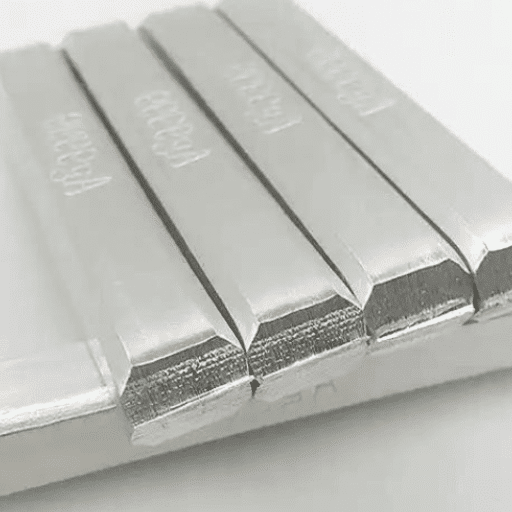
Design Summary: Sterling silver offers intricate, luxurious designs, while stainless steel provides modern, durable, and affordable styles.
Bracelets: Style and Material Choice
In the selection of bracelets, the combination of style and material significantly influences the attractiveness, longevity, and usefulness of the piece. The following are some critical factors to keep in mind when rating bracelets:
💪 Durability of the Material
Gold bracelets: Their durability is moderate, but they might need extra care to prevent scratching.
Stainless steel bracelets: Can last very long and be resistant to daily strains of use and wear.
🧼 Requirements for Maintenance
Gold bracelets: Will very much need regular polishing to keep their bright appearance and may get tarnished with time.
Stainless steel bracelets: Require little or no maintenance and are not affected by tarnishing.
💰 Price Range
Gold bracelets: Usually carry a higher price tag because of the luxurious aspect of the material.
Stainless steel bracelets: Those who want an inexpensive yet practical option for daily wear can choose stainless steel bracelets.
🎯 Intended Customers
Gold bracelets are made for luxury buyers who are looking for elegant and sophisticated designs.
Stainless steel bracelets: Functional and versatile rings are made for everyday users who are the target of stainless steel bracelets.
🩺 Hypoallergenic Qualities
Gold bracelets Are a source of allergies, especially for people with sensitive skin.
Stainless steel bracelets: Are a hypoallergenic product and thus, are a great selection for allergy-prone people.
If these factors are considered carefully, the buyer can choose the ideal bracelet that suits his/her style and practical needs.
Necklaces: Aesthetic Appeal
Necklaces are one of those jewelry pieces that are mainly bought due to their beauty. They are not only functional but also give a chance to the wearer to show off his/her character and improve his/her outfit. The aesthetic appeal of necklaces is due to five major factors:
1. Design and Craftsmanship
The first thing that one considers when thinking about a necklace is its design and craftsmanship. There are many intricate patterns and unique designs that, on the one hand, show art and, on the other hand, the great deal of effort put into it. When a necklace is made by hand, it is more likely to be cherished and appreciated by the owner since it carries a personal touch, which is, in fact, a part of its charm.
2. Material and Finish
The second factor is the material and finish. The use of precious metals, such as gold, silver, and platinum, gives a necklace a luxurious and timeless look. On the contrary, the use of alternative materials, such as stainless steel or leather, is aimed at modern and casual tastes.
3. Gemstones and Embellishments
The third factor is gemstones and embellishments. The use of gemstones like diamonds, emeralds, or pearls, amongst others, does not only increase but rather skyrocket a necklace’s elegance. Rhinestones and cubic zirconia, on the other hand, are sparkling and cost-effective alternatives to diamonds.
4. Length and Style
The next factor is length and style. Necklaces of different lengths, like chokers, princess lengths, and opera lengths, make different visual effects that go well with different necklines and occasions. Selecting a pendant, making a statement with an oversized piece, or wearing several necklaces together are just some of the ways one can express his or her individuality through the choice of a particular necklace style.
5. Customization Options
The fifth factor is the myriad of customization options. Personalized necklaces that have engraved initials or names, for example, are precious because of the sentimental value they hold. Giving the wearer of the necklace the choice of selecting certain charms or stones definitely adds to its meaningfulness.
After taking into account these elements, one can select a necklace that will not only match his or her clothing but also be an expression of his or her individual character and taste.
Earrings: Comfort and Wearability
When it comes to choosing earrings, comfort and wearability are two very important factors that need to be considered. Earrings. They are a very versatile accessory, but at the same time, the design, materials, and style of the earring greatly affect how it feels and how appropriate it is for different occasions. So, here are five crucial points to remember:
⚖️ Earring Weight
Lightweight earrings are perfect for all-day wear since they won’t tire the earlobes.
On the other hand, heavier earrings that are beautiful might only be suitable for short-term wear to avoid any discomfort.
🔬 Material
Hypoallergenic materials, e.g., surgical steel, titanium, or gold, reduce the odds of allergic reactions.
If you have sensitive skin, it would be wise to stay away from nickel-based earrings.
🔒 Closure Type
Secure closures of the screw-back or lever-back type can give you the assurance needed for active use.
Push-backs are the type of clasps that are easy to use and they also allow for quick removal and functionality.
👂 Fit Of the Earlobe
Small studs or hoops can provide a snug fit and are good for everyday use.
Care should be taken with dangly or drop earrings, particularly for persons who have already stretched or fragile earlobes.
⏰ Suitability For Timing
Simple studs or small hoops are applicable for both casual and professional environments.
Big or showy earrings not only draw attention but also add more elegance to the formal or party occasions.
Making these considerations your priority, you will not only be able to choose the earrings that look good, but also are comfortable, thus creating the look you want and feeling good at the same time.
Conclusion: Which is Better for You?

The final choice of earrings comes down to your fashion style, comfort, and then the specific occasions you intend to wear them for. The most recent statistics from Google’s search engine point to the fact that there is a growing interest in customizable and versatile options, which implies that the majority prefer earrings that can be shifted to different settings. Moreover, very light and hypoallergenic materials get the highest preference for casual use, while the bold statement pieces keep their popularity for once-in-a-lifetime events. You can reach a suitable solution in-between fashion, functionality, and comfort by judging your needs along with these trends.
Factors to Consider When Choosing
1️⃣ Material
The material used in making earrings not only determines their comfort and longevity but also plays a major part in the whole decision process. Surgical steel, titanium, or gold which are hypoallergenic, are the best choices for sensitive skin types. Statistics reveal that nearly 20% of individuals suffer from skin irritation due to earrings containing nickel and therefore, they have to settle for other materials which are more expensive but comfortable.
2️⃣ Weight
Earrings that have a light weight are the ones that people choose for long periods, as heavy designs may not only hurt the wearer but also cause damage to the earlobes. Research states that a pair of earrings weighing less than 7 grams is regarded as comfortable by the majority of customers.
3️⃣ Style Versatility
The purchase of earrings that move in a good way between dressing up and down occasions gives more worth to the user. For example, 40% of consumers admit that they will buy designs that fit in multiple situations disguised as minimalistic studs or hoops.
4️⃣ Size
The size not only affects how they look but also how practical they are. Small to medium earrings are the best for daily wear, while large ones are reserved for special occasions. According to the market trend, medium-sized earrings are the most frequent purchases in everyday sales, accounting for almost 50% of the sales.
5️⃣ Closure Type
The different clasp types such as butterfly backs, screw backs, or hinged closures, have their own advantages in terms of security and comfort. Among all, screw-back closures are favored by the people who want sturdy jewelry the most, since the surveys show that 30% of consumers choose them, mainly when it comes to children’s earrings.
Final Thoughts on Sterling Silver and Stainless Steel
Sterling silver and stainless steel each have their own set of advantages, and the decision between the two will ultimately be based on individual needs and preferences. In my opinion, sterling silver is the clear winner, thanks to its everlasting beauty and its worth as a precious metal, which together make it an ideal choice for either special occasions or more delicate designs. Conversely, stainless steel is a great option for daily wear because of its long-lasting nature, protection from tarnishing, and low price. I, for one, value the flexibility of both metals and think that they each deserve a spot in a diverse jewelry collection.
References
📄 The Properties of Standard Sterling Silver, with Notes on Its Manufacture
This source discusses the properties and industrial applications of sterling silver.
📄 Exploring the Creative Possibilities of Argentium™ Sterling Silver
This paper explores the ductility and creative applications of Argentium™ sterling silver.
📄 Tarnish-proof Sterling Silver: Understanding the Limitations
This document examines the engineering properties and limitations of tarnish-proof sterling silver.
Frequently Asked Questions (FAQ)
❓ What are the differences between stainless steel and sterling silver?
The primary differences between stainless steel and sterling silver lie in their composition and properties. Stainless steel is an alloy made primarily of iron, carbon, and chromium, making it highly durable and resistant to tarnish and corrosion. On the other hand, sterling silver is a precious metal that consists of 92.5% pure silver and 7.5% other metals, usually copper. While sterling silver offers a beautiful shine, it is softer and more prone to tarnishing than stainless steel.
❓ Is stainless steel jewelry better than sterling silver jewelry?
Whether stainless steel jewelry is better than sterling silver jewelry depends on individual preferences and needs. Stainless steel jewelry is often more affordable and resistant to tarnish, making it a practical choice for everyday wear. However, sterling silver jewelry is valued for its beauty and craftsmanship, offering a classic and elegant look that many people prefer for special occasions.
❓ How does tarnish affect sterling silver jewelry?
Tarnish is a common issue with sterling silver jewelry, which occurs when the metal reacts with sulfur and moisture in the air. This reaction forms a dark layer on the surface, diminishing the shine of the sterling silver pieces. Regular cleaning and proper storage can help minimize tarnish, but unlike stainless steel, sterling silver requires more maintenance to keep it looking its best.
❓ What are the pros and cons of stainless steel jewelry?
Stainless steel jewelry offers several advantages, including durability, resistance to tarnish, and affordability. It’s an excellent option for those with sensitive skin, as it is hypoallergenic. However, the cons of stainless steel include its heavier weight compared to sterling silver and the lack of the warm, rich luster that sterling silver pieces provide.
❓ Can I choose stainless steel for my jewelry collection?
Choosing stainless steel for your jewelry collection can be a smart decision, especially if you’re looking for pieces that are durable and low-maintenance. Stainless steel offers a modern aesthetic that can complement various styles, making it suitable for everyday wear as well as special occasions.
❓ How does sterling silver compare to stainless steel in terms of value?
Sterling silver is considered a precious metal and typically holds higher value than stainless steel. The value of silver can fluctuate based on market conditions, but sterling silver jewelry often comes with a higher price tag due to its composition and the craftsmanship involved in making each piece. In contrast, stainless steel is generally more affordable and accessible.
❓ What type of jewelry is best for sensitive skin: stainless steel or sterling silver?
For individuals with sensitive skin, stainless steel is often the better choice due to its hypoallergenic properties. Many stainless steel jewelry pieces are made with surgical-grade stainless steel, which minimizes the risk of allergic reactions. Sterling silver, while beautiful, may contain copper that can cause irritation in some people.
❓ What are the key differences between sterling silver and stainless steel?
The key differences between sterling silver and stainless steel include their composition, durability, and maintenance requirements. Sterling silver is a softer, precious metal that tarnishes more easily, while stainless steel is a robust alloy that resists tarnish and is easier to maintain. Additionally, stainless steel jewelry tends to be more affordable, making it a popular choice for everyday wear.
Recyclable

